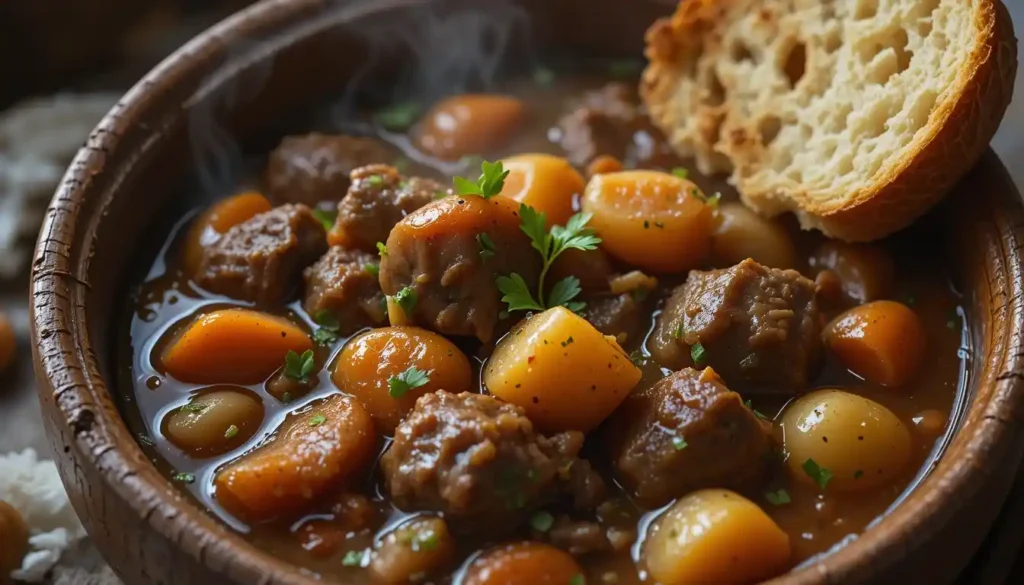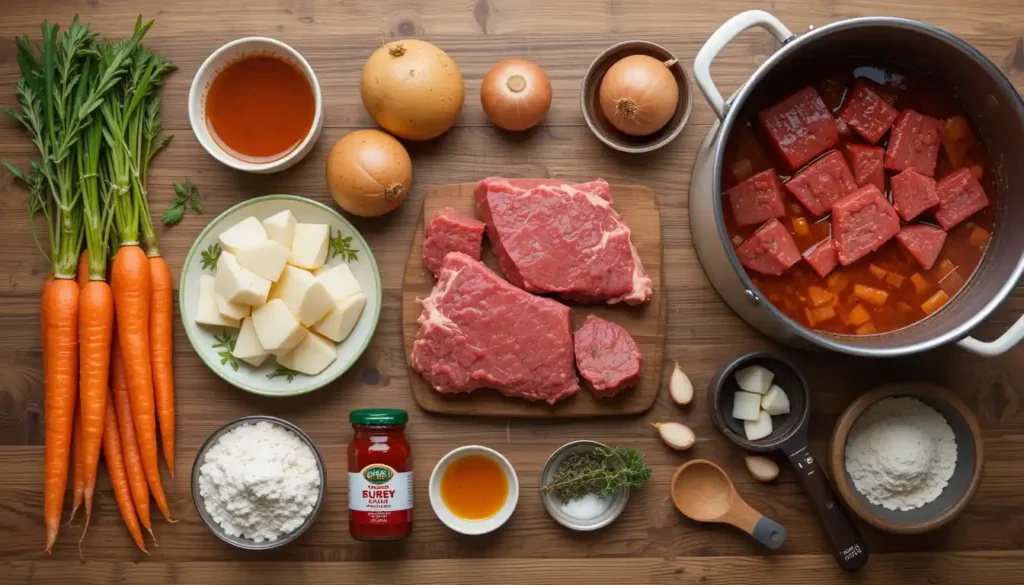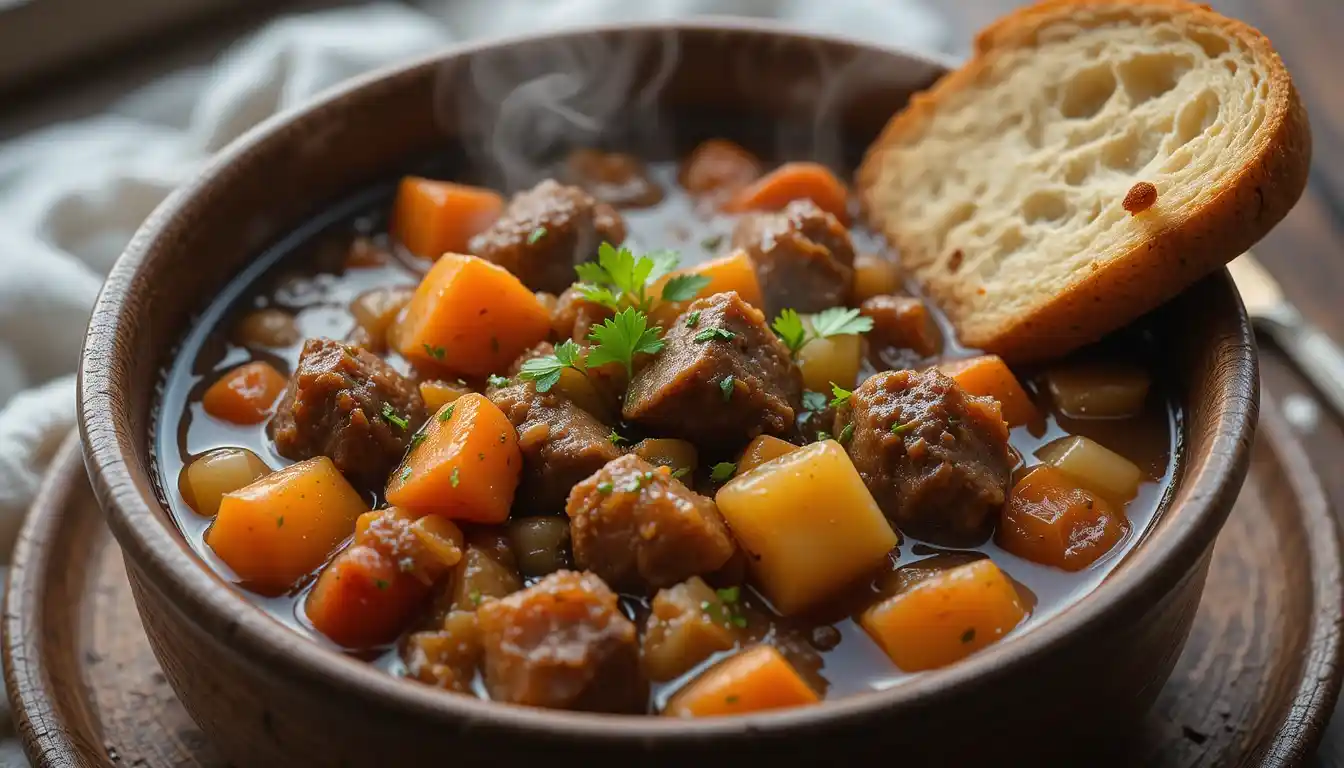Table of Contents
Boneless Chuck Roast for Thrift and Flavor
Boneless chuck roast is one of the most underrated cuts of beef—affordable, flavorful, and incredibly versatile. Cut from the shoulder of the cow, this well-marbled piece of meat is rich in connective tissue and fat, which breaks down beautifully during slow cooking, resulting in tender, juicy, and deeply flavorful bites. Whether you’re preparing a comforting pot roast, shredded beef for tacos, or a hearty stew, chuck roast delivers big taste without breaking the budget.
One of the biggest advantages of using boneless chuck roast is its cost-effectiveness. It’s typically much cheaper than premium cuts like ribeye or sirloin, yet it offers a bold, beefy flavor that stands up well to a variety of seasonings and cooking methods. From slow cookers to Dutch ovens, this cut shines when cooked low and slow, allowing the collagen to melt into the meat and create a melt-in-your-mouth texture.
Chuck roast is also ideal for batch cooking and meal prep. Make a large roast on Sunday, and use the leftovers throughout the week in sandwiches, soups, or stir-fries. With just a few pantry staples and a bit of time, boneless chuck roast proves that great flavor doesn’t have to come at a high price.

Hot Take: Browning Might Be Overrated
Browning meat has long been considered essential for developing deep, complex flavor—but is it always necessary? While searing does create rich, caramelized notes through the Maillard reaction, skipping this step can actually yield surprisingly delicious results, especially when it comes to slow-cooked dishes like stews, braises, or pot roasts.
In recipes where the meat simmers for hours, the lengthy cook time naturally builds deep flavor. The broth or sauce absorbs juices and fat from the meat, creating a rich base without the need for an initial sear. Skipping browning also simplifies prep, reduces mess, and saves time—especially helpful on busy weeknights or when using a slow cooker.
Some chefs argue that browning is less about necessity and more about tradition or aesthetics. In blind taste tests, many people can’t tell the difference between a browned and unbrowned roast when it’s been slow-cooked for several hours. Plus, with flavorful seasonings, aromatic vegetables, and quality ingredients, your dish won’t lack complexity.
So while browning still has its place, it’s not always the make-or-break technique it’s made out to be. Don’t be afraid to skip the sear—your stew will still be deeply flavorful, tender, and satisfying.
Build a Better Broth
A great broth is the foundation of countless comforting dishes, from soups and stews to gravies and braises. But making a truly flavorful broth goes beyond just simmering bones or tossing bouillon into water. To build a better broth, you need a thoughtful balance of ingredients, time, and technique.
Start with high-quality bones—chicken, beef, or even vegetable scraps if going meatless. Roasting bones beforehand adds depth and a hint of caramelized richness, especially for beef or turkey broth. Don’t skip the aromatics: onion, celery, and carrots are the classic base, but additions like garlic, leeks, parsnips, and herbs (think thyme, parsley, bay leaves) elevate the flavor.
Simmer low and slow. Avoid boiling, which can cloud your broth and make it taste harsh. A gentle simmer over several hours coaxes out maximum flavor and allows collagen from bones to create a rich, silky mouthfeel. Skim impurities from the surface as needed to keep the broth clean and clear.
For seasoning, salt lightly during cooking and adjust at the end to taste. A splash of vinegar or a piece of tomato can help brighten flavors and extract nutrients from the bones.
Homemade broth freezes well, so make a big batch—you’ll be glad you did.
Simple Quick Breads to Serve With Stew
When you’ve got a bubbling pot of stew on the stove, nothing completes the meal like a warm, freshly baked bread. Quick breads are perfect for this moment—easy to whip up, no yeast or rising time required, and ready in under an hour. They’re the ideal companion to soak up all that rich, savory broth.
Cornbread is a classic choice. Slightly sweet with a golden crust, it pairs beautifully with hearty beef or chili-style stews. Add chopped jalapeños or shredded cheese for a twist.
Buttermilk biscuits are another go-to. Flaky, buttery, and tender, they’re great for dipping or splitting open and spooning stew right over the top. Bonus: you can make them in one bowl with pantry staples.
Savory scones made with herbs, cheese, or even cooked bacon can elevate your side game. They’re dense yet soft, and add a flavorful punch to milder stews.
Irish soda bread—a rustic, crusty loaf with a soft crumb—is another favorite. With its hint of tang from buttermilk and minimal kneading, it’s perfect for beginners and pairs well with beef or lamb stews.
These breads don’t just fill the plate—they bring comfort, texture, and balance to your meal.
Easy Beef Stew
Beef stew is the ultimate comfort food—warm, hearty, and satisfying. This easy beef stew recipe brings all the rich flavor of a long-simmered classic, but with minimal effort and simple ingredients you likely already have on hand.
Start with boneless chuck roast, cut into bite-sized cubes. It’s affordable and becomes meltingly tender when simmered. Brown the meat in a pot (or skip this step if you’re in a hurry), then add onions, garlic, and tomato paste to create a rich base. Deglaze the pan with a splash of red wine or beef broth, scraping up any browned bits for extra flavor.
Next, add beef broth, carrots, potatoes, celery, and your favorite herbs—bay leaves, thyme, and rosemary are classic. Let everything simmer gently for 1.5 to 2 hours, until the beef is fork-tender and the vegetables are soft but not mushy. A slurry of flour or cornstarch can be added near the end to thicken the broth if desired.
Serve hot, with fresh bread or over mashed potatoes. This stew is even better the next day, making it perfect for leftovers. It’s the kind of simple, wholesome dish that brings everyone to the table—no fuss, just flavor.
Ingredients :

This easy beef stew comes together with basic pantry staples and a few fresh ingredients. Here’s what you’ll need:
- 2 lbs boneless chuck roast, cut into 1½-inch cubes
- 2 tablespoons vegetable oil – For browning the meat
- 1 large yellow onion, diced
- 3 cloves garlic, minced
- 2 tablespoons tomato paste – Adds depth and richness
- 1 cup red wine (optional) or additional beef broth – For deglazing
- 4 cups beef broth – The flavorful base of your stew
- 4 medium carrots, sliced into thick rounds
- 3 medium potatoes, peeled and chopped into chunks (Yukon Gold or Russet)
- 2 stalks celery, chopped
- 2 teaspoons salt, or to taste
- 1 teaspoon black pepper
- 1 teaspoon dried thyme
- 1 teaspoon dried rosemary
- 2 bay leaves
- 1 tablespoon Worcestershire sauce – Optional, for umami depth
- 2 tablespoons flour or cornstarch mixed with 3 tablespoons water (optional, for thickening)
- Fresh parsley, chopped (for garnish, optional)
These ingredients create a rich, savory, and hearty stew perfect for cold days or anytime comfort food is needed.
Method :

- Prep the Ingredients
Start by cutting the chuck roast into 1½-inch cubes. Dice the onion, mince the garlic, and chop the vegetables into hearty chunks. - Brown the Meat (Optional)
In a large Dutch oven or heavy-bottomed pot, heat the oil over medium-high heat. Working in batches, brown the beef cubes on all sides, about 2–3 minutes per side. Set aside. This step adds extra flavor but can be skipped if you’re short on time. - Sauté the Aromatics
Reduce heat to medium. Add the diced onion to the pot and cook for 3–4 minutes until softened. Stir in the garlic and tomato paste, cooking for another minute. - Deglaze the Pot
Pour in the red wine (or a cup of broth), scraping the bottom of the pot to release any browned bits. This adds depth to the stew. - Add Remaining Ingredients
Return the beef to the pot. Add the beef broth, carrots, potatoes, celery, herbs, Worcestershire sauce (if using), salt, and pepper. Stir to combine. - Simmer Low and Slow
Bring to a simmer, cover, and reduce heat to low. Cook for 1.5 to 2 hours, stirring occasionally, until the beef is tender. - Thicken and Serve
If desired, stir in a cornstarch slurry and simmer uncovered for 5–10 minutes to thicken. Garnish with fresh parsley and serve warm.
Tip
For even deeper flavor, make your beef stew a day ahead. Like many braised dishes, stew often tastes better the next day after the flavors have had time to meld. Simply refrigerate it overnight, then gently reheat on the stove or in the oven before serving. You’ll notice richer, more developed flavors—and the texture of the meat and vegetables often improves too.
Additionally, if you’re short on time, you can make this stew in a slow cooker or pressure cooker. For the slow cooker, add all ingredients and cook on low for 7–8 hours or high for 4–5 hours. In a pressure cooker or Instant Pot, cook on high pressure for 35 minutes, then allow a natural release. Both methods produce tender beef and delicious results with minimal hands-on effort.
To avoid mushy vegetables, especially in long simmers or slow cooker versions, consider adding delicate items like potatoes or carrots halfway through cooking if you prefer them firmer.
Finally, don’t forget the finishing touches: a handful of chopped fresh herbs, a splash of vinegar, or even a dollop of sour cream can brighten the stew and bring it to life right before serving.
FAQs
1. Can I skip browning the beef?
Yes, you can! While browning adds flavor and color, it’s not essential for a good stew. If you’re short on time, skip it—your stew will still be rich and hearty thanks to the long, slow cooking process.
2. What’s the best cut of beef for stew?
Boneless chuck roast is ideal because it has good marbling and becomes very tender when cooked low and slow. Avoid lean cuts like sirloin, which can dry out and become tough.
3. Can I make this stew in a slow cooker or Instant Pot?
Absolutely. For the slow cooker, cook on low for 7–8 hours or high for 4–5 hours. In the Instant Pot, use high pressure for 35 minutes followed by natural release. Adjust veggies to avoid overcooking.
4. How do I thicken beef stew?
You can use a slurry of cornstarch or flour mixed with cold water. Stir it into the stew during the last 10 minutes of cooking and simmer until thickened.
5. Can I freeze beef stew?
Yes, beef stew freezes well. Let it cool completely, then freeze in airtight containers for up to 3 months. Thaw overnight in the fridge and reheat gently on the stove.
Conclusion
Easy beef stew is the kind of meal that brings warmth and comfort with every bite. It’s a timeless dish that’s perfect for busy weeknights, slow weekends, or any time you’re craving something hearty and homemade. With just a few simple ingredients—beef, vegetables, broth, and herbs—you can create a satisfying, flavorful stew that feels like it’s been simmering all day, even if it hasn’t.
What makes this stew so special is its flexibility. You can brown the meat for extra flavor or skip that step to save time. You can cook it on the stovetop, in a slow cooker, or with an Instant Pot—whatever works best for your schedule. It stores and reheats beautifully, making it ideal for meal prep or leftovers throughout the week.
Pair it with a slice of crusty bread, a warm biscuit, or a simple quick bread to complete the experience. However you choose to serve it, this beef stew is sure to become a staple in your kitchen—reliable, cozy, and endlessly delicious.
So next time you’re looking for a no-fuss dinner that delivers big flavor, reach for this easy beef stew recipe. It’s comfort food at its best—simple, nourishing, and always satisfying.


2 thoughts on “Easy Beef Stew Recipe”
Comments are closed.